As of December 22, Indian Lake Dam has totaled just 4.4 inches for the present snow season. This is simply mind-blowing when the average October thru December snowfall for Indian Lake is nearly 3 feet!
To be sure, any hint of a “pattern change” by the GFS models has been latched onto by the social media community like a shark clamping its jaws into a piece of dangling meat. But in a previous post, I outlined how these “pattern changes” would end up being totally bogus. By the way, last weekend’s lake effect snow event did not constitute a pattern change.
It would be easy to totally throw this winter in the trash, now that we have lost the Christmas to New Year’s stretch. But I’m going to point to some real indications that January will mark the transition from what we have now to a much colder and snowier regime.
Introducing: Stratospheric Polar Vortex
This feature resides near the top of the atmosphere, by the North Pole. When the stratospheric Polar Vortex is strong, powerful westerly winds from the stratosphere transfer momentum down to the jet stream to create a howling, non-buckling zonal flow across North America.
You can see this in action right now:
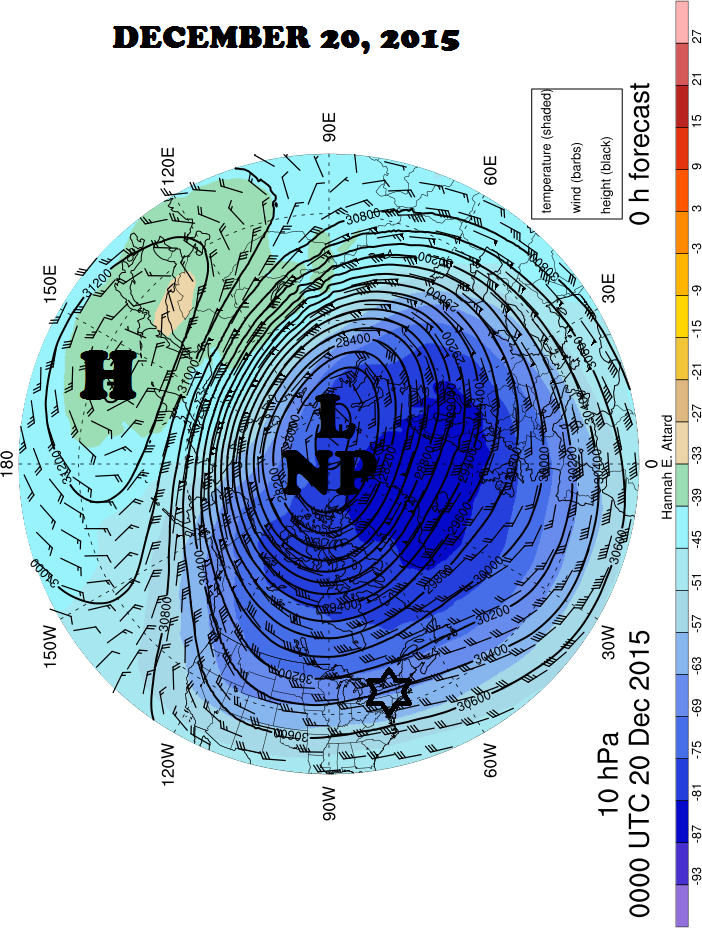
The strong westerly winds throughout North America lock the cold away in the Arctic. Any attempt for winter to take a foot hold is rapidly overwhelmed by warm surges (like a rubber band snapping back). For example, last’s week attempt at winter has been countered by a rapid warm-up that will culminate in record-smashing warmth for Christmas Eve.
To contrast, I will show you what the stratosphere looks like when we get really cold. Last winter makes a great example of this:
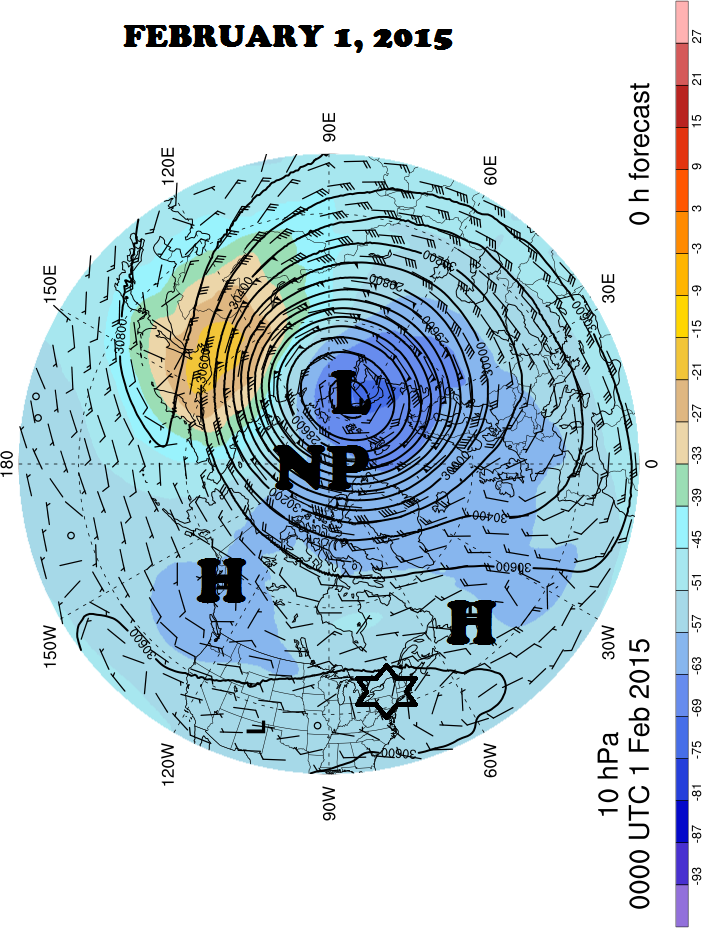
Notice how the stratospheric Polar Vortex is weaker and displaced further from the North Pole. The light and variable stratospheric winds over North America greatly reduce downward transfer to the jet stream. This allows warm PDO+ to induce PNA+ ridging and force Arctic cold air into the United States with staying power.
Changes to the Polar Vortex
Through the end of 2015, the ensembles show more of the same with a very strong stratospheric Polar Vortex:
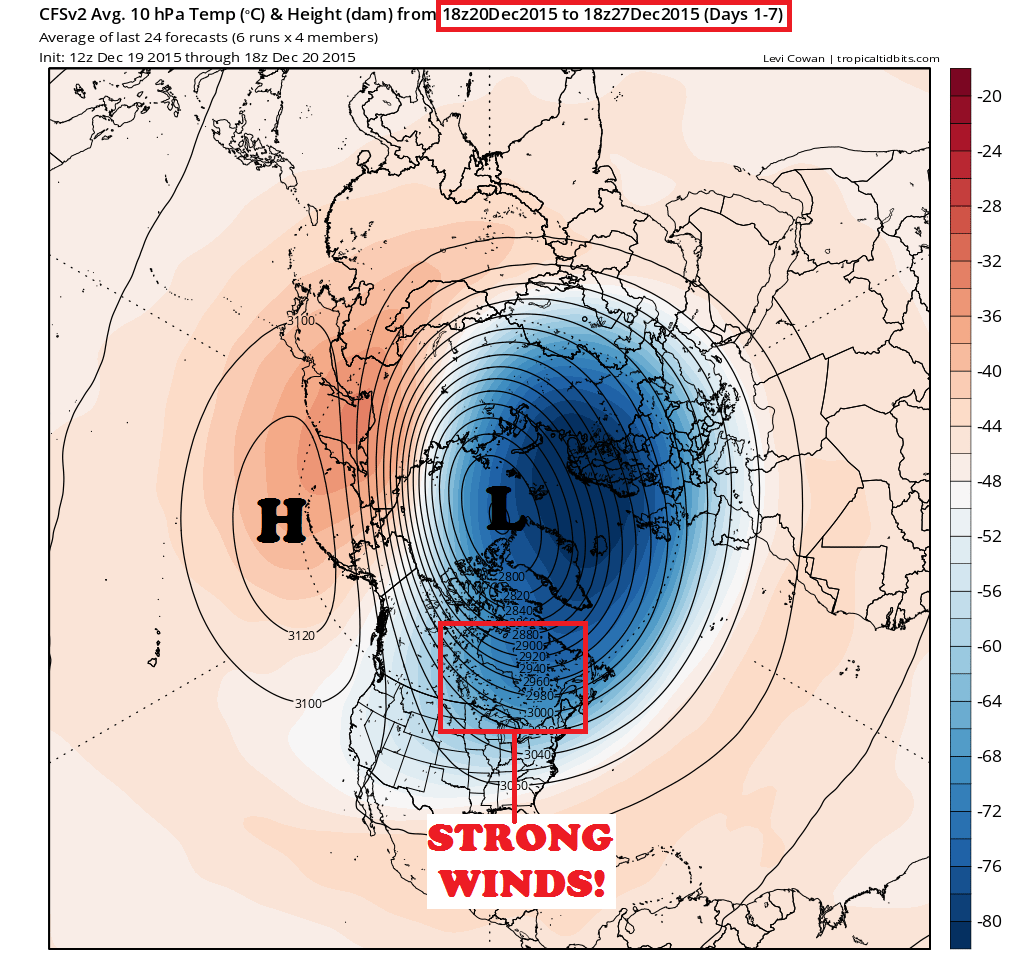
But the players begin to move around in January. By the middle of the month, the Polar Vortex will have weakened greatly and become displaced from the North Pole by significant stratospheric warming:

This significant pattern change would begin to unlock the Arctic gates and finally bring real winter to ilsnow land. The ensembles show a similar pattern holding through February:
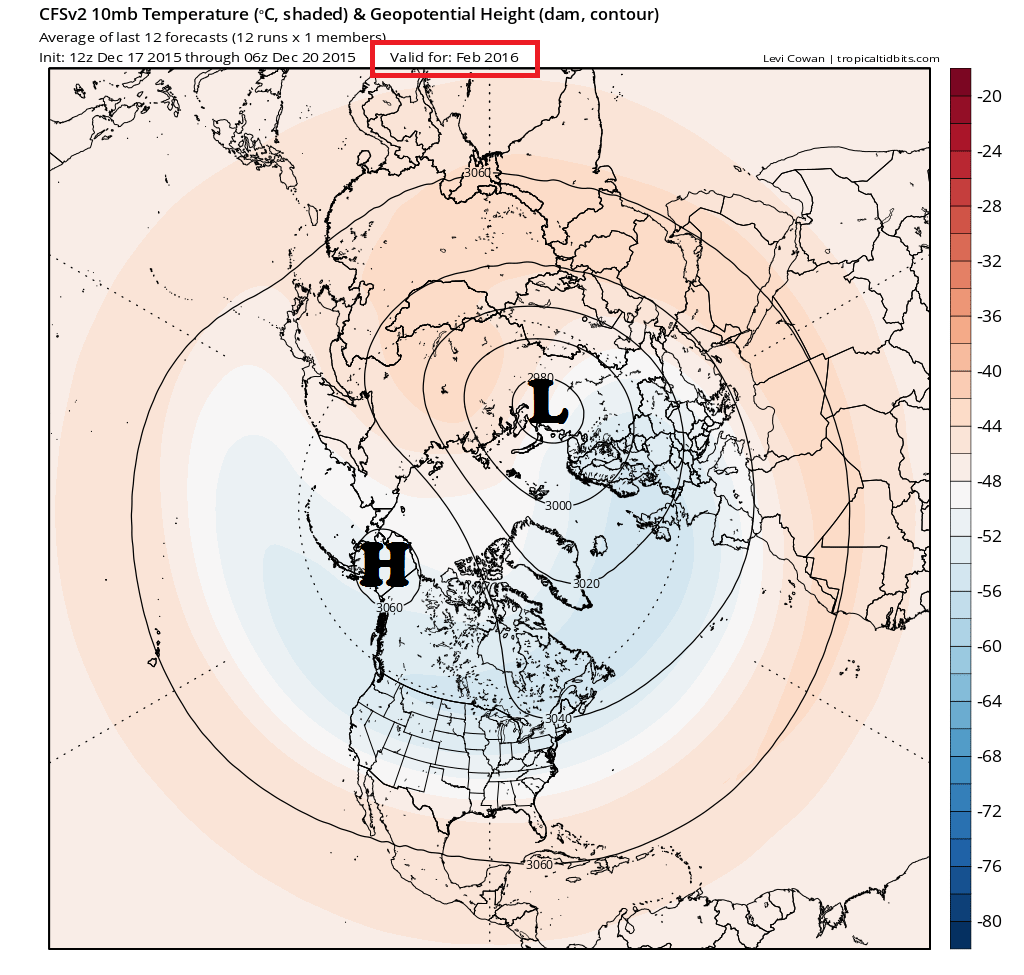
The massive Eurasian/Siberian snow cover this autumn is thought to be a major driver in substantial stratospheric warming and subsequent weakening of the Polar Vortex. If you’re up for a bit of weather geekery, you can read Dr. Judah Cohen’s blog and weekly updates to get a fundamental understanding of this connection.
Ensemble forecasts cannot be used to pinpoint singular events. But they can be used to decipher hemispheric patterns that are either favorable or hostile to cold and snowy weather. Since the ensembles are the composite average of multiple model runs over multiple days, they don’t change on a whim. Therefore, there can be a higher degree of confidence in the forecast large scale patterns.
El Nino?
Weakening… Another good sign:
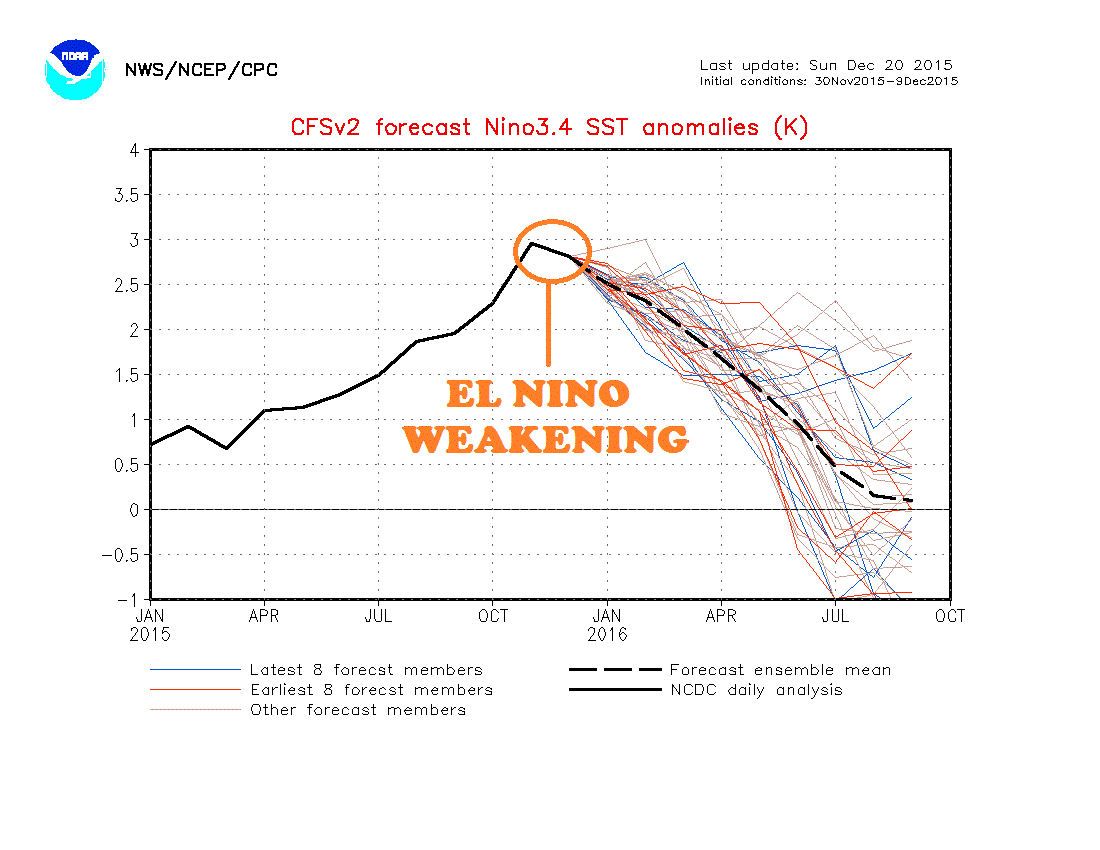
Bottom line:
Despite how it looks outside right now, I’m surprisingly confident that the later half of January through February will be a true winter with ample opportunities for significant cold and snow. While the mind-blistering temperature anomalies of December probably won’t be completely erased by January and February, the second half of winter may be startling flip similar to 2006-07.
For the ilsnow nation,
Darrin

